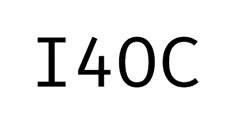Visuomotor skills in school children: A cross-cultural study Peru-Brazil
Keywords:
Bender, Visomotor, ChildrenAbstract
The principal aim of the study was evidences of the validity offered psicométrica of the Gestáltico Visomotor Bender’s Test (TGV) and the System of Qualification of Gradual Punctuation (B-SPG). In this respect the maturity was appraised visomotora at 108 children of both sexes by ages understood between 6 and 10 years of primary age of mixed colleges of level of Metropolitan Lima and to compare these results with an equal sample (108) of children of the condition of Sao Paulo State in Brazil. Thinking that Bender’s TGV with the B-SPG is a consistent test where all the articles contribute to the test. Significant differences being observed in function to the age where to major minor age number of mistakes and minor total score. This inversely proportional relation between the age and the number of mistakes was described as method to measure the maturity visomotora and was established by Bender in his original study in the year 1955. On the other hand, they did not find significant differences in function to the sex.
Downloads
References
Arrillaga, S., Eschebarria, C. y Goya, I. (1981). Una investigación sobre aspectos intelectuales en una población de deficientes de un grupo marginal. Psiquis: Revista de Psiquiatría, Psicología y Psicosomática, 2(1), 12-22.
Bartholomeu, D. y Sisto, F. (2008). Maturidade viso-motora e inteligência: um estudo correlacional. Psicologia: Ciência e Profissão, 28(2), 362- 373.
Bender, L. (1938). A visual motor Gestalt test and its clinical use. Washington, DC: The American Orthopsychiatric Association Research.
Bender, L. (1975). Test guestáltico visomotor: usos y aplicaciones clínicas (15-52). Buenos Aires: Editorial Paidós.
Buckley, P. (1978). The Bender Gestalt test a review of reported research with school-age subjects, 1966-1977. Psychology in the Schools, 15(3), 327-335.
Campbell, D. y Stanley, J. (1973). Diseños experimentales y cuasiexperimentales en la investigación social. Buenos Aires: Amorrortu Editores.
Carvalho, L. y Noronha, A. P. P. (2009). Maturidade perceptomotora e compreensão em leitura: um estudo correlacional. En A. A. A. Santos, E. Boruchovitch y K. L. Oliveira. O Cloze como instrumento de diagnóstico e intervenção-estudos e pesquisas (53-64). São Paulo: Casa do Psicólogo.
Condemarín, M. (1986). Madurez Escolar. Chile: Editorial Andrés Bello.
Cunha, J. (2000). Psicodiagnóstico V. Porto Alegre, RS: Artes Médicas.
Ferreira, N. y Tiellet, P. (2007). Diferentes sistemas de aplicação e interpretação do Teste gestáltico Visomotor de Bender. Psic, Jun, 8(1), 41-49.
Frosting, M. (1980). Programa para el desarrollo de la percepción visual. Buenos Aires: Panamericana.
Goldstein, D., Petterson, N. y Sheaffer, C. (1989). Concurrent validity of the Gardner Test of visual-motor skills. Perceptual and Motos Skills, 69(2), 605-606.
Harper, H. (1998). Visual evoked potential correlates with visual-motor integration as measured by the Bender Gestalt Test. Dissertation Abstracts International, 58(8-B), 4509.
Hurlock, E. (1988). Desarrollo del niño. México: Mc Graw-Hill.
Jing, G., Deqing, T., y Longhui, L. (2001). Visual-motor deficit in children with learning disabilities. Chinese-Mental-Health-Journal, 15(6),388-390.
Koppitz, E. (1963). The Bender Gestalt for young children (vols. I y II). New York: The Psychological Corporation, Harcourt Brace Jovanovich, Inc.
Koppitz, E. (1964). The Bender gestalt test for young children. New York: Grune and Stratton.
Llopis, M. (2007). La aplicación del test de Bender en el día a día del psicopedagogo escolar. Recuperado de https://www.quadernsdigitals.net/index.php?accionMenu=hemeroteca
Mallinger, B. y Longley, K. (1988). Bip-Bender protocols of learning disabled and regular education students. Perceptual and Motor Skills, 67(1), 193-194.
Márquez, M. (1992). Evaluación del desarrollo psicomotriz. En Fernández-Ballesteros, R. (ed.), Introducción a la evaluación psicológica (284- 315). Madrid: Pirámide.
McIntosh, J., Belter, R., Saylor, C., Finch, A. y Edwards, G. (1988). The Bender-Gestalt with adolescents: Comparision of two scoring sys- tems. Journal of Clinical Psychology, 44(2), 226- 230.
Nielson, S. y Sapp, G. (1991). Bender-Gestalt developmental scores: Predicting reading and mathematics achievement. Psychologycal Reports, 69, 39-42.
PNUD (2008). Informe sobre Desarrollo Huma- no 2007-2008. La lucha contra el cambio climático: Solidaridad frente a un mundo dividido.
Ráez, M., Martínez, C., Niño de Guzmán, P., Rossel, I. y Twanama, Z. (1988). Relación entre maduración, sexo y nivel socioeconómico a través del test guestáltico visomotor de Bender. Revista de Psicología, 4(1), 23-36.
Silvestre, N., Salaverry, O. y Gonzales, G. (1995). Madurez visomotora en escolares de ambos sexos de Lima (150 m) y de Cerro de Pasco (4340 m). Acta Andina, 4(1), 35-42.
Sohlberg, S. (1985). Personality and neuropsychological performance of high-risk children. Schizophrenia-Bulletin, 11(1), 48-60.
Suehiro, A. y Santos, A. (2005). O Bender e as dificuldades de aprendizagem: Estudo de validade. Avaliação Psicológica, 4, 23-31.
Suehiro, A., Rueda, F. y Silva, M. (2007). Desenvolvimento percepto-motor em crianças abrigadas e não abrigadas. Paidéia, 17(38), 431-442.
Vergara, A y Balluerka, N. (2000). Metodología en la investigación transcultural: perspectivas actuales. Psicothema, 12, 557-562.
Downloads
Published
How to Cite
Issue
Section
License
Copyright (c) 2017 PsiqueMag

This work is licensed under a Creative Commons Attribution-NonCommercial-NoDerivatives 4.0 International License.
You are free to:
- Share — copy and redistribute the material in any medium or format
- The licensor cannot revoke these freedoms as long as you follow the license terms.
Under the following terms:
-
Attribution — You must give appropriate credit, provide a link to the license, and indicate if changes were made. You may do so in any reasonable manner, but not in any way that suggests the licensor endorses you or your use.












